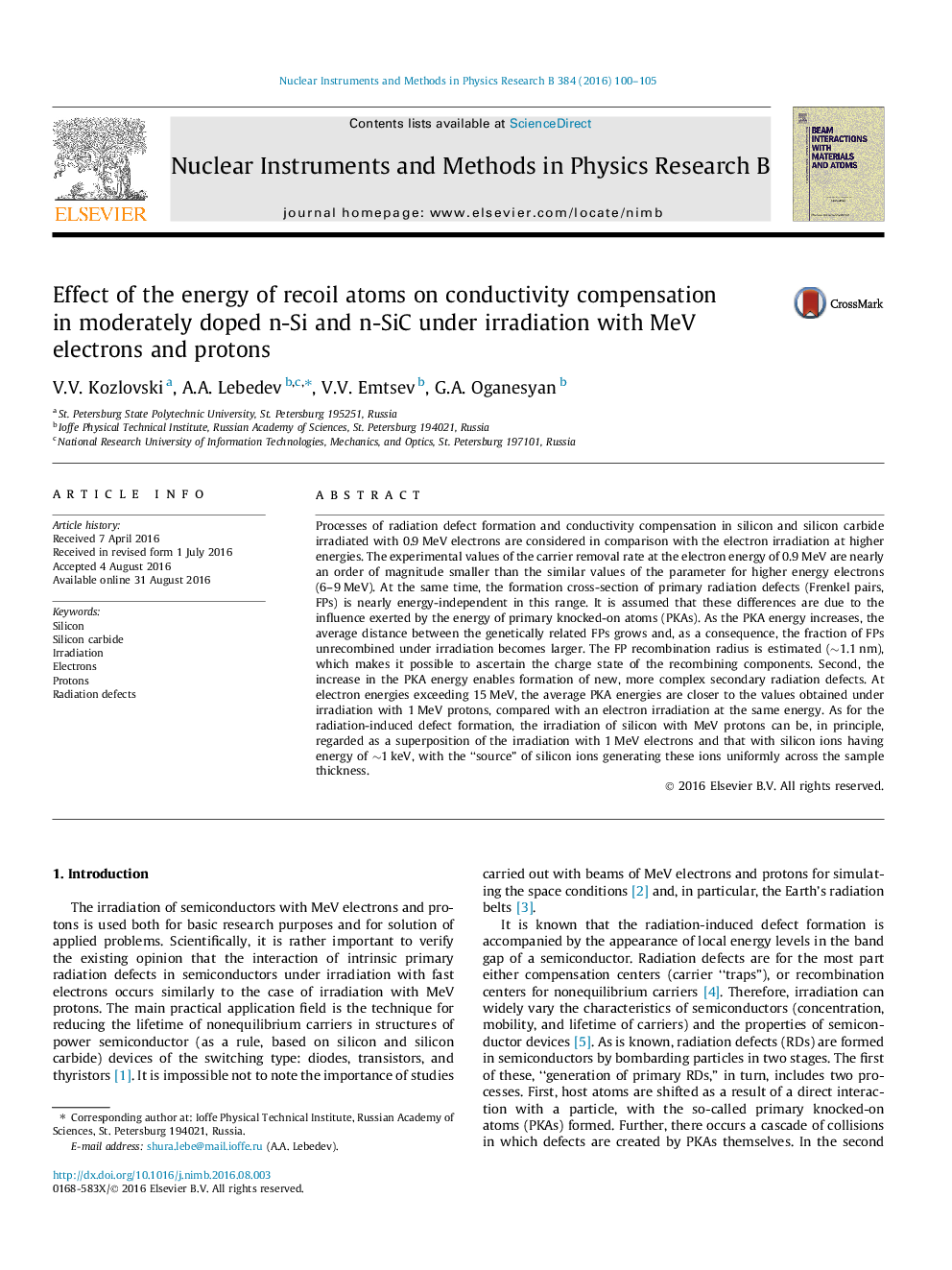| Article ID | Journal | Published Year | Pages | File Type |
|---|---|---|---|---|
| 8039608 | Nuclear Instruments and Methods in Physics Research Section B: Beam Interactions with Materials and Atoms | 2016 | 6 Pages |
Abstract
Processes of radiation defect formation and conductivity compensation in silicon and silicon carbide irradiated with 0.9Â MeV electrons are considered in comparison with the electron irradiation at higher energies. The experimental values of the carrier removal rate at the electron energy of 0.9Â MeV are nearly an order of magnitude smaller than the similar values of the parameter for higher energy electrons (6-9Â MeV). At the same time, the formation cross-section of primary radiation defects (Frenkel pairs, FPs) is nearly energy-independent in this range. It is assumed that these differences are due to the influence exerted by the energy of primary knocked-on atoms (PKAs). As the PKA energy increases, the average distance between the genetically related FPs grows and, as a consequence, the fraction of FPs unrecombined under irradiation becomes larger. The FP recombination radius is estimated (â¼1.1Â nm), which makes it possible to ascertain the charge state of the recombining components. Second, the increase in the PKA energy enables formation of new, more complex secondary radiation defects. At electron energies exceeding 15Â MeV, the average PKA energies are closer to the values obtained under irradiation with 1Â MeV protons, compared with an electron irradiation at the same energy. As for the radiation-induced defect formation, the irradiation of silicon with MeV protons can be, in principle, regarded as a superposition of the irradiation with 1Â MeV electrons and that with silicon ions having energy of â¼1Â keV, with the “source” of silicon ions generating these ions uniformly across the sample thickness.
Related Topics
Physical Sciences and Engineering
Materials Science
Surfaces, Coatings and Films
Authors
V.V. Kozlovski, A.A. Lebedev, V.V. Emtsev, G.A. Oganesyan,
